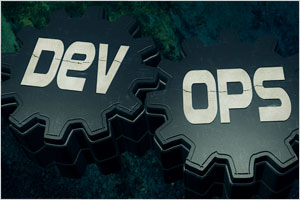Site Reliability Engineering (SRE)
What is Site Reliability Engineering (SRE)?
Site Reliability Engineering (SRE) is a discipline that combines software engineering and operations to ensure the reliable and efficient functioning of complex systems. SRE focuses on building and maintaining scalable, reliable, and highly available systems by applying software engineering principles to IT operations problems. It involves creating automation, monitoring, and incident response systems to proactively prevent and resolve issues. SRE teams work closely with development teams to improve system performance, reliability, and resilience. The goal of SRE is to minimize service disruptions, optimize performance, and continuously improve the overall reliability of a system or application.
What is the difference between SRE and DevOps?
Site Reliability Engineering (SRE) and DevOps share the common goals of improving system reliability, efficiency, and collaboration between development and operations teams.
Whilst SRE and DevOps have some differences, they are not mutually exclusive and there is a large overlap between them. Many regard SRE principles and practices to be a subset of DevOps, with SRE providing a specific focus on reliability engineering within the broader context of DevOps principles and methodologies.
SRE focuses on system reliability, while DevOps emphasizes collaboration and faster software delivery. SRE applies engineering principles to operations to ensure stable systems, while DevOps promotes cross-functional teamwork and automation for efficient software development and deployment.
It is common for organizations, especially larger ones, to adopt a combination of SRE and DevOps practices to achieve their reliability and operational goals, and to have both a SRE strategy and a DevOps strategy.
Who coined the term “Site Reliability Engineering”?
The term "Site Reliability Engineering" (SRE) was coined by Benjamin Treynor Sloss, who is now Vice President of Engineering at Google. He introduced the term in 2003 while leading what was the “production” team at Google, which was responsible for ensuring that Google is always available and performant. The Google Site Reliability Engineering team is one of a number of teams Sloss now leads, responsible for the availability and uptime of Google's vast infrastructure and services. Sloss documented Google's approach to managing reliability in a seminal paper titled "Site Reliability Engineering: How Google Runs Production Systems," which outlined the principles and practices of SRE. Two popular books followed from Sloss’ team and since then, SRE has gained widespread recognition and adoption in the tech industry. The book “Site Reliability Engineering: How Google Runs Production Systems” by the Google team (Betsy Beyer et al) is a good place to start to understand not just the technical details but also the philosophy of Site Reliability Engineering.
How is Site Reliability Engineering implemented?
Site Reliability Engineering (SRE) focuses on ensuring the reliability, availability, and performance of systems and services. Most organizations will implement some of the following steps when implementing SRE:
Successful implementation of SRE requires a commitment from both technical and management teams, and it is often an ongoing journey of continuous improvement and adaptation based on the specific needs and challenges of the organization. Common tools and processes are essential practical steps needed to ensure effective collaboration between all the stakeholders.
The Site Reliability Engineering focus on user experience
For some the term “SRE” (Site Reliability Engineering) can conjure up images of people watching server health graphs on a wide-screen dashboard and responding to pager alerts. These are important but what is of the highest importance for SREs is to build reliable systems that deliver a great user experience.
SREs ensure that the infrastructure and applications features are designed in a way that supports specific SLO (Service-Level Objectives). SLOs are targets that are formally agreed by SREs with the business and measure what your internal and external customers really care about: usually associated with speed and quality. Real user monitoring is a great barometer for both speed and quality.
For example, when SREs consider SLOs related to availability they would typically define the target percentage of time that a service or system should be accessible and operational. For example, an SLO might state that the service should be available to users 99.9% of the time in a given month, allowing for only 0.1% of unplanned downtime.
SREs track SLIs (Service-Level Indicators) such as API errors and latency for every critical step of the user journey. These SLIs are essentially the metrics that determine whether there is compliance with the SLOs agreed with business.
Site reliability engineering as a philosophy is all about delivering business results – better customer retention and high user satisfaction through solid and reliable systems. Tools such as Real User Monitoring (RUM) are used by SREs to start at the top with measuring the actual user experience and then working their way down the stack to find failure points in the full-stack application.
What features do SREs need in monitoring tools?
SREs (Site Reliability Engineers) typically require specific features in monitoring tools to effectively manage and ensure the reliability of systems and services. Key features that are valuable for SREs in monitoring tools include:
Having these features in monitoring tools empowers SREs to effectively monitor, diagnose, and maintain the reliability of systems and services, enabling proactive management and quick incident resolution.
How does AIOps relate to Site Reliability Engineering (SRE)?
AIOps, or Artificial Intelligence for IT Operations, is a practice that leverages artificial intelligence, machine learning and statistical analysis to enhance and automate various aspects of IT operations.
AIOps enables SREs (Site Reliability Engineers) to respond rapidly and even proactively to slowdowns, performance issues and outages, with significantly less manual effort and automatically at scales beyond human capabilities. AIOps technologies can diagnose and pinpoint the root causes of issues automatically allowing rapid remediation.
Many organizations with a strong focus on SRE are adopting AIOPs enabled tools and an AIOPs strategy as part of their automation programs.
What are the top open-source and free monitoring tools that SRE Engineers use?
SRE engineers often leverage a range of open-source and free monitoring tools that provide flexibility, extensibility, and cost-effectiveness. Some of the most widely used open-source and free monitoring tools in the SRE domain include: Prometheus, Grafana, Nagios Core, Zabbix, Icinga, Sensu Go, Netdata and The ELK (Elasticsearch, Logstash, and Kibana) Stack.
Whilst there are many benefits to open-source and free tools, many organizations find the manual tooling and coding associated with integrating them together is a significant overhead. The fact these tools are unsupported and that if there is a problem the end user has to find their own solution or workaround is problematic for many. As a result, many organizations use paid for supported versions of these tools or opt for a fully supported enterprise product such as eG Enterprise, AppDynamics, New Relic, Dynatrace or Datadog.
Some of the pros and cons of open-source and free monitoring tools are covered in: Top Freeware and Open-source IT Monitoring Tools | eG Innovations.





